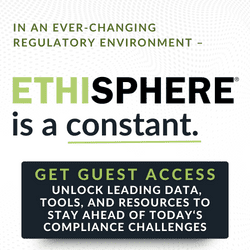Moving Beyond Routine Contract Provisions
If companies are to maintain a commitment to risk mitigation, they must keep an eye on (and extend its oversight to) distributors – as well as sub-distributors and sub-sub-distributors. This will mean leveraging distributor relationships and using a variety of tools and strategies to conduct compliance and financial audits. Limiting oversight to strictly formal audits is an unnecessary restriction on the company’s ability to mitigate risks.
Whether you are in the high-tech industry and managing your channel partners (i.e., third-party distribution network), the pharmaceutical and medical device industry managing a complex network of distributors and sub-distributors or any other industry relying on third-party distributors, chief compliance officers face a number of challenges managing and mitigating risks.
To state the obvious, a company relying on distributors has, by definition, less control over the conduct of its distributors (and sub-distributors) than its own sales employees. A company has to manage its relationship with distributors primarily through its contracts and informal understandings and communications. Such relationships can range from informal, without a contract, to a complex set of contracts and formalized understandings.
There are two common types of distributors. From the pure business standpoint, most distributors maintain a buy-sell relationship wherein they purchase products from the company and resell the items at a price set by the distributor. The “buy-sell” distributors are sometimes characterized as company “customers,” but in fact, they are really acting as intermediaries in the sale of company products to sub-distributors and final customers/users. A less common model is for companies to supply a distributor on “consignment,” meaning the distributor does not pay a company for its product until the distributor sells the product.
When assessing bribery risks, it is important to focus on potential sources of funds for distributors to use to pay bribes. First and most significant is the margin that distributors earn. The distributor sets the price, subject to competitive forces, and seeks to maximize its profits. Second, some companies provide their distributors with financial and marketing benefits, including rebate programs and marketing/promotion funds. The level of risk requires companies to monitor these programs, audit the use of funds and make sure that distributors are not siphoning off money to fund bribery schemes.
In the high-tech industry in particular, companies provide significant marketing support to promote business development. Distributors use these funds for a variety of promotional programs, some of which operate close to the line between legitimate marketing and corrupt activities. As a consequence, high-tech companies have to audit and monitor their distributors, requiring documentation and proof of legitimate marketing activities.
To address distributor risks, companies rely on a mix of mitigation strategies, including comprehensive written representations and warranties, training, annual certifications, monitoring of activities and audit programs.
Companies have to move beyond “standard” contract provisions that have become “routine” over the last few years. Of course, a company has to secure appropriate compliance representations and warranties, as well as audit and termination provisions. As risk assessments and third-party strategies evolve, companies should look to tailoring additional provisions to the “specific” risk for a distributor.
Additional provisions have to be crafted for distributors’ relationships with sub-distributors – and sub-sub-distributors. Assuming that the company is only in privity with the distributor, the company has to leverage its relationship with the distributor to impose requirements on the distributor to exercise oversight responsibility of the sub- and sub-sub-distributors in its distribution chain. In this area, companies should consider requiring distributors to seek company approval of a sub-distributor before engaging the sub-distributor to sell the company’s products.
Many companies have secured appropriate audit provisions from their distributors. Companies have to exercise these audit clauses to maintain their credibility and commitment to risk mitigation, and should include distributors in the development of its annual audit plan. The key here is to conduct compliance and financial audits using a range of tools and strategies. A company that limits its audits to only formal, financial audits is unnecessarily restricting its audit capabilities to mitigate risks.
New and cutting-edge monitoring strategies are being developed to ensure that companies focus on high-risk distributors and flag those for follow-up inquiries and audits. With the advent of third-party management technologies, companies can free up resources to develop monitoring tools to capture and mitigate high-risk distributors.
This article was republished with permission from Michael Volkov’s blog, Corruption, Crime & Compliance.



 Michael Volkov is the CEO of The Volkov Law Group LLC, where he provides compliance, internal investigation and white collar defense services. He can be reached at
Michael Volkov is the CEO of The Volkov Law Group LLC, where he provides compliance, internal investigation and white collar defense services. He can be reached at 








